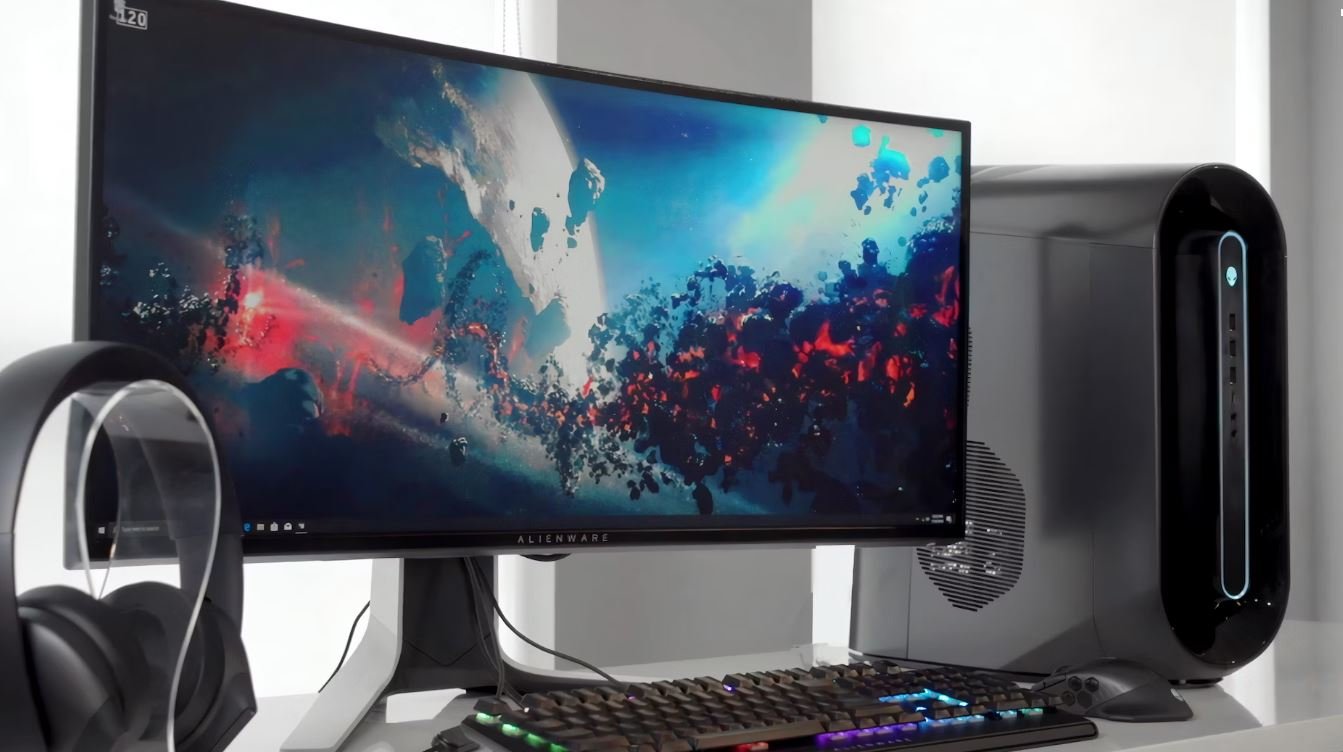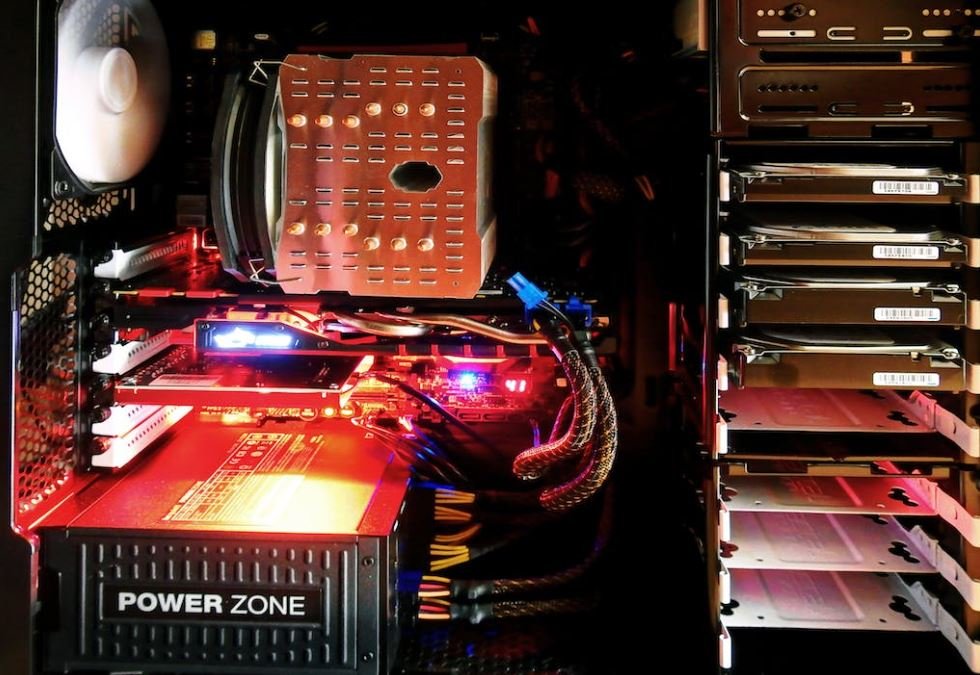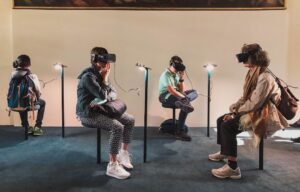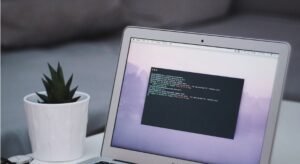Deepfake Ka Matlab
Deepfake, a portmanteau of “deep learning” and “fake,” refers to the use of artificial intelligence (AI) algorithms to manipulate or create realistic videos or images. The technology behind deepfakes has advanced significantly in recent years, making it easier to create convincing and hard-to-detect fabricated media.
Key Takeaways:
- Deepfakes use AI algorithms to manipulate or create realistic videos or images.
- The technology behind deepfakes has advanced significantly in recent years.
- Deepfakes pose challenges in terms of misinformation and trust in media.
- Various methods, such as forensics and awareness campaigns, are being developed to combat deepfake threats.
Artificial intelligence plays a critical role in the production of deepfakes. These algorithms employ a technique called “generative adversarial networks” (GANs) to generate realistic and believable media that can be used to manipulate or deceive viewers. *Deepfakes can be impressive in their ability to convincingly mimic individuals or create entirely fictional scenarios.*
The use of deepfakes raises significant concerns. With the ability to create or modify videos and images almost indistinguishable from genuine ones, the potential for deepfake misuse is vast. From spreading misinformation to tarnishing reputations and damaging public trust, deepfakes pose serious challenges for individuals and society. Governments, tech companies, and researchers are actively working to develop solutions. *Efforts to counter deepfakes not only rely on technological advancements but also on raising awareness among the public.*
The Impact of Deepfakes
The implications of deepfakes extend to various domains, including politics, entertainment, and cybersecurity. Here are some notable impacts of deepfakes:
- 1. Political Manipulation: Deepfakes can be used as a tool for political propaganda, potentially creating chaos and confusion during elections.
- 2. Entertainment: Deepfakes have also found their way into the entertainment industry, enabling filmmakers to seamlessly incorporate deceased actors into movies.
- 3. Fraud and Scams: Deepfake technology opens up opportunities for cybercriminals to engage in identity theft, financial fraud, and social engineering attacks.
To fully understand the extent of the deepfake challenge, it is crucial to examine the underlying techniques and technologies involved. Here are three types of deepfake methods:
- 1. Face Swapping: This method involves replacing a person’s face in a video or image with someone else’s face. It requires a large dataset of images for training the AI model.
- 2. Lip Synthesis: Lip-syncing technology is used to alter spoken words and make it appear as though a person is saying something they didn’t say.
- 3. Voice Cloning: With the help of AI voice synthesis techniques, one can reproduce someone’s voice by training the model on a large dataset of audio recordings.
The Fight Against Deepfakes
Countering deepfake threats encompasses technical solutions, legal measures, and public awareness campaigns. Here are some strategies in the fight against deepfakes:
- 1. Forensic Techniques: Developing advanced algorithms to detect and authenticate original media can help in identifying deepfakes.
- 2. Legislation and Policies: Governments are exploring legal measures to hold creators of malicious deepfakes accountable.
- 3. Media Literacy: Promoting media literacy and critical thinking among the public can help reduce the impact of deepfakes.
| Deepfake Detection Methods | Accuracy |
|---|---|
| Forensic Analysis | 60% |
| Geometric Analysis | 75% |
As deepfake technology continues to advance, new detection methods are being researched and developed. Efforts are underway to enhance detection accuracy through the combination of various techniques. *The continuous cat-and-mouse game between deepfake creators and detection methods fuels the need for ongoing research and innovation.*
| Effects of Deepfakes on Public Trust | Percentage of Individuals Impacted |
|---|---|
| Loss of Trust in Media | 82% |
| Increased Skepticism | 67% |
| Unreliable News Consumption | 58% |
The impact of deepfakes on public trust cannot be underestimated. With widespread dissemination and increasing believability, deepfake content can erode trust in media and lead to the spread of misinformation. *Building resilience against deepfakes requires collective efforts from journalists, technology companies, and the general public.*
Conclusion
Deepfake technology represents a powerful tool for manipulating and creating realistic videos or images, which brings both opportunities and challenges. The ability to detect deepfakes and educate the public will be crucial in mitigating the negative impacts. As technology continues to evolve, ongoing research, collaboration, and vigilance are essential to stay ahead in the battle against deepfakes.

Common Misconceptions
Deepfake technology is always used for malicious purposes
One common misconception about deepfake technology is that it is exclusively used for negative and harmful purposes, such as spreading fake news or manipulating information. However, while there have been cases of deepfakes being used inappropriately, it is crucial to recognize that this technology also has legitimate applications, such as in the entertainment industry and for enhancing digital effects in movies.
- Deepfakes can be used to create entertaining and realistic special effects in movies.
- They can also be utilized for educational purposes, such as historical reenactments or visualizing scientific concepts.
- Deepfake technology is being researched to improve virtual reality and augmented reality experiences.
Deepfakes are easy to detect
Another misconception is that deepfakes are easily recognizable, and anyone can identify them with a quick glance. However, as deepfake technology advances, it becomes increasingly challenging to detect these manipulated videos or images. Some deepfakes are so convincing that they can fool both humans and sophisticated AI algorithms dedicated to detecting them.
- Advancements in machine learning algorithms have made deepfakes more difficult to identify.
- Rapid improvements in deepfake technology have increased the realism and quality of generated content.
- Deepfakes can effectively mimic the appearance and behavior of real individuals, making detection challenging.
Deepfakes can only be harmful if they go viral
Many people believe that deepfakes only pose a threat if they become viral and widely shared. However, this is a misconception. Even if a deepfake doesn’t gain significant attention, it can still lead to damage on an individual level. For example, a targeted deepfake could be used to defame someone or used in a social engineering attack to gain trust and manipulate individuals on a small scale.
- Deepfakes can target specific individuals, causing personal harm or reputational damage.
- Even if not widely circulated, a deepfake can be used for targeted manipulation or harassment.
- Individuals may unknowingly interact with deepfake content, leading to personal consequences.
Deepfake technology is only getting worse and more dangerous
While it is true that the capabilities of deepfake technology have improved significantly over time, it is essential to recognize that countermeasures and detection techniques are also advancing. As deepfake detection algorithms continue to evolve, researchers and tech companies are making progress in identifying and preventing the spread of deepfake videos and images.
- Ongoing research focuses on developing better deepfake detection methods and algorithms.
- Collaboration between academia, industry, and policymakers aims to address the risks associated with deepfakes.
- Increased public awareness and education about deepfakes can help combat their negative effects.
Deepfakes are only a recent phenomenon
While deepfakes have gained significant attention in recent years, they are not a recent development. The concept and techniques behind deepfakes have been around for several years, with early examples dating back to at least the late 1990s. However, advancements in machine learning and computing power have accelerated the creation and dissemination of deepfake media.
- Deepfakes have been in development for over two decades.
- The term “deepfake” was coined in 2017, but the underlying technology predates the term.
- Early deepfake techniques required significant manual effort, but automation has made them more accessible in recent years.

Deepfakes: The Rise of AI-Driven Deception
The emergence of deepfake technology has raised concerns about the potential for malicious use and manipulation of digital content. Deepfakes are highly realistic fake videos or images generated by artificial intelligence algorithms, enabling the creation of convincing but entirely fabricated content. This article explores the various implications, applications, and challenges surrounding deepfake technology.
The Impact of Deepfakes on Journalism and Media
The proliferation of deepfake technology poses significant challenges for journalism and media outlets. It undermines the trust and credibility traditionally associated with these entities, as well as the ability to discern truth from fiction. The following table illustrates the extent of deepfake impact on media:
| Impact | Description | Example |
|---|---|---|
| False News | Deepfakes can be used to spread false information, creating confusion and misinformation. | A deepfake video allegedly showcasing a public figure making controversial statements caused panic and unrest. |
| Political Manipulation | Deepfakes can be utilized to sway public opinion during elections or political campaigns. | A deepfake video of a political candidate endorsing a policy they oppose was released to damage their reputation. |
| Image Tampering | Deepfakes can manipulate images, leading to the creation of deceptive visual narratives. | A doctored deepfake photograph depicted a celebrity in a compromising situation, damaging their public image. |
Deepfake Detection Techniques: A Battle Against Deception
With the increasing threat of deepfakes, researchers and technology experts are actively developing techniques to detect and identify manipulated content. Successful detection is crucial to combatting the detrimental effects of misleading deepfakes. The following table outlines some existing detection methods:
| Technique | Principle | Advantage |
|---|---|---|
| Facial Analysis | Deepfake videos often exhibit inconsistencies in facial expressions or movement patterns. | Relatively accurate in identifying manipulated facial features. |
| Audio Analysis | Deepfakes may struggle to replicate the unique characteristics of an individual’s voice. | Effective in flagging discrepancies between voice patterns and known recordings. |
| Forensics Tools | Specialized software can detect traces of manipulation in digital images and videos. | Can uncover hidden artifacts or inconsistencies using advanced algorithms. |
Deepfakes in Entertainment: Transforming Digital Media
Beyond its negative implications, deepfake technology has also found a place in the world of entertainment. Through the manipulation of existing content, deepfakes offer exciting possibilities for filmmakers and content creators to push the boundaries of storytelling. The following table showcases some notable instances of deepfake utilization in entertainment:
| Application | Description | Example |
|---|---|---|
| Digital Resurrections | Deepfakes bring deceased actors or characters back to life through advanced CGI techniques. | A deceased actor was virtually resurrected using deepfake technology to reprise their famous role in a movie sequel. |
| Cameo Appearances | Deepfakes allow celebrities to make surprising appearances in movies or TV shows without physically being present. | A popular musician was deepfaked into a music video to create a unique collaboration experience. |
| Historical Revivals | Deepfake technology can enhance historical footage and bring significant moments to life with added realism. | A famous speech from history was deepfaked, making it appear as if an iconic figure delivered it with modern clarity. |
The Legal and Ethical Implications of Deepfakes
Deepfake technology raises important legal and ethical questions regarding privacy, consent, and the potential misuse of digital content. These concerns must be addressed to mitigate the risks associated with deepfakes. The following table highlights some critical legal and ethical considerations:
| Issue | Description |
|---|---|
| Consent | Deepfakes blur the lines between consent and privacy, as individuals may be portrayed in compromising situations without their knowledge. |
| Intellectual Property | Deepfakes challenge traditional notions of intellectual property rights, particularly when it comes to digitally altered media content. |
| Defamation | Deepfake videos can harm an individual’s reputation or incite public outrage, leading to potential defamation lawsuits. |
Deepfakes in Education: A Double-Edged Sword
Deepfake technology holds potential benefits for educational purposes, allowing students to engage with historical figures or simulations. However, it also poses risks in academic integrity and misinformation. The following table sheds light on the diverse implications of deepfakes in education:
| Application | Description | Risk |
|---|---|---|
| Interactive Learning | Deepfakes enable immersive experiences by interacting with virtual tutors or historical personalities. | Increased risk of misinformation if students rely solely on deepfakes as sources of knowledge. |
| Skills Training | Deepfakes provide simulated environments for practical training, such as medical procedures or emergency response. | The danger of professionals relying on simulated scenarios without real-world experience. |
| Remote Lectures | Deepfakes could allow guest speakers or renowned experts to virtually deliver lectures despite physical barriers. | Potential for identity impersonation, as verifying the authenticity of remote presenters becomes critical. |
Combating Deepfakes: Technological and Regulatory Solutions
To address the challenges posed by deepfakes, a combination of technological advancements and robust regulations is necessary. The following table showcases different approaches in combating deepfake manipulation:
| Strategy | Description | Advantages |
|---|---|---|
| Blockchain Verification | Utilizing blockchain technology to create an immutable record of digital content, ensuring authenticity. | Provides an auditable trail to verify the legitimacy of media files. |
| Multimodal Verification | Using a combination of different verification techniques, such as analyzing facial features, voice patterns, and contextual clues. | Increases the accuracy of detection by considering multiple data points and avoiding false positives. |
| Deepfake Legislation | Introducing legal frameworks that expressly criminalize the creation and dissemination of deepfake content without consent. | Serves as a deterrent and provides a legal basis for prosecuting deepfake-related offenses. |
The Future of Deepfakes: Challenges and Opportunities
The rapid advancements in deepfake technology present a series of challenges that need to be addressed in order to protect individuals and societal well-being. However, deepfakes also offer potential opportunities in various fields. The following table sheds light on the future of deepfake technology:
| Field | Challenges | Opportunities |
|---|---|---|
| Politics | Deepfakes can significantly impact public trust, electoral processes, and democratic systems. | Deepfake detection advancements can aid in ensuring fair elections by flagging manipulated content. |
| Entertainment | Deepfakes blur the boundaries of reality and fiction, potentially undermining the authenticity of performances. | Creative use of deepfake technology can enhance storytelling and open up new artistic possibilities. |
| Security | Deepfakes raise concerns regarding the potential for identity theft, fraud, and cyberattacks. | Deepfake detection and authentication technologies can strengthen digital security measures. |
Conclusion
The rise of deepfake technology presents a range of challenges and opportunities across multiple sectors. From the impact on journalism and media to the legal and ethical considerations, the implications of deepfakes are vast. However, advancements in detection techniques, combined with regulatory measures and responsible use, will be pivotal in mitigating the negative consequences. By understanding the complex landscape of deepfakes, we can navigate the future with caution while embracing the positive potential they offer.
Frequently Asked Questions
What does “Deepfake Ka Matlab” mean?
The phrase “Deepfake Ka Matlab” is Hindi for “meaning of deepfake”. It refers to the concept of deepfake technology, which involves using artificial intelligence and machine learning to manipulate or create realistic videos, images, or audio recordings that are intentionally deceptive.
How does deepfake technology work?
Deepfake technology uses deep learning algorithms to analyze and manipulate existing videos, images, or audio recordings. It can map the facial features, expressions, and voice of one person onto another to make them appear as if they are saying or doing something they never did. This process involves training a model with a large dataset and then using it to generate the manipulated content.
What are the potential risks of deepfakes?
Deepfakes have raised concerns about privacy, security, and the spread of misinformation. They can be used to create fake news, impersonate individuals, and manipulate public perception. Deepfakes can be particularly harmful in scenarios involving politics, revenge porn, or spreading false information that can damage someone’s reputation.
How can I identify a deepfake?
Identifying a deepfake can be challenging, but there are some signs to look out for. Inconsistencies in facial movements, unnatural blinking, lack of shadows, or blurry outlines around the face can indicate a deepfake. However, as the technology improves, so does its ability to create more convincing deepfakes, making it increasingly difficult to distinguish them from real content.
Are deepfakes illegal?
The legality of deepfakes varies by jurisdiction. In some countries, creating and sharing deepfakes without the consent of the individuals involved can be illegal, especially if used for malicious purposes such as defamation or harassment. It is important to familiarize yourself with the laws in your specific region regarding the creation and dissemination of deepfake content.
How can we combat the negative effects of deepfakes?
Combating the negative effects of deepfakes requires a multi-faceted approach. Technological advancements in detection methods and tools can help identify deepfakes more effectively. Raising awareness about deepfake technology and its potential dangers can also help individuals become more cautious consumers of digital content. Collaboration between tech companies, policymakers, and researchers is vital to develop regulations and standards that address the misuse of deepfake technology.
Can deepfake technology be used for positive purposes?
While deepfakes have mostly gained attention for their negative implications, there are potential positive uses as well. Deepfake technology can be utilized in the entertainment industry for special effects or in filmmaking. It can also aid in research and development by simulating scenarios or generating synthetic data for training AI models. However, the ethical use of deepfakes remains a subject of debate and caution.
Are social media platforms taking action against deepfakes?
As the risks associated with deepfakes become more prominent, social media platforms are taking steps to combat their spread. Some platforms are implementing policies to remove or flag deepfake content that violates their guidelines. Additionally, tech companies are investing in AI-powered systems to detect and mitigate the impact of deepfakes on their platforms.
Is it possible to remove deepfake content once it’s created?
Removing deepfake content can be challenging. Once a deepfake is created and shared, it can circulate rapidly on the internet, making it difficult to completely eliminate it. However, efforts are being made to develop better detection and removal techniques. Engaging with the platforms where the deepfake is being shared and reporting the content can also help in its removal.
What can individuals do to protect themselves from deepfakes?
Individuals can take several steps to protect themselves from the potential harm caused by deepfakes. Being cautious when consuming media and verifying the authenticity of the content is important. Being mindful of the potential for deepfakes in sensitive contexts, such as private conversations or compromising situations, can also help. Staying updated on the latest information and awareness campaigns regarding deepfakes can further enhance individuals’ ability to protect themselves.




